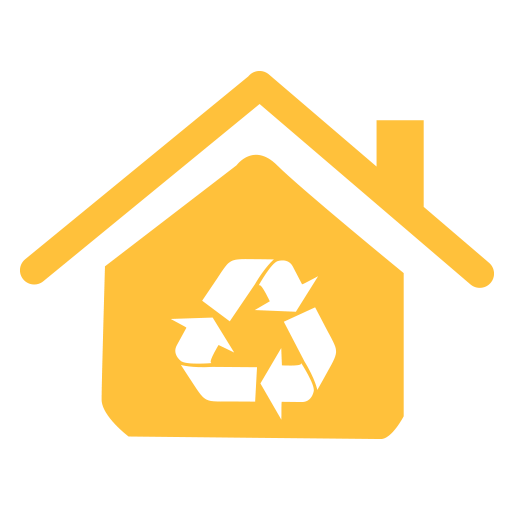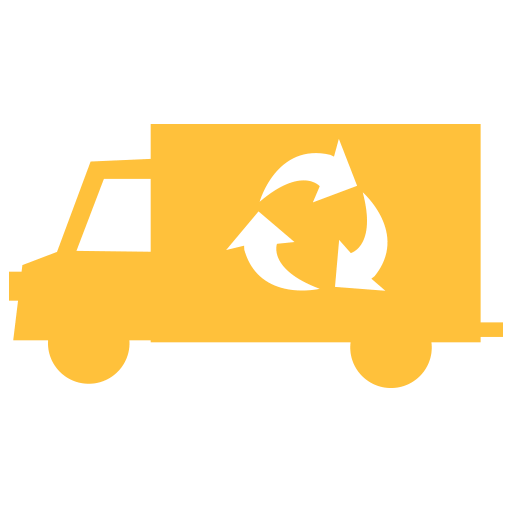Discover the Hidden Signs of Hoarding
Posted on 28/06/2025
Discover the Hidden Signs of Hoarding: A Comprehensive Guide
Hoarding is more than just a messy house or a cluttered space--it's a complex mental health disorder with far-reaching consequences. Many people who struggle with hoarding fly under the radar for years, as the symptoms are not always overt or easily recognized. In this in-depth guide, we'll explore hidden signs of hoarding, how hoarding disorder differs from everyday collecting, and share tips for recognizing when a loved one may need help.

Understanding Hoarding Disorder
Before delving into the nuanced symptoms of hoarding, it's vital to understand what hoarding disorder is. According to the Diagnostic and Statistical Manual of Mental Disorders (DSM-5), hoarding disorder is characterized by persistent difficulty discarding or parting with possessions, regardless of their actual value. This leads to the accumulation of items that clutter active living areas and leads to significant distress or problems functioning.
- Compulsive collecting or saving items
- Difficulty or stress when discarding items
- Overwhelming clutter that impedes living spaces
- Emotional distress and impaired functioning
But the real challenges often lie in identifying the less obvious signs-- the subtle indicators that signal a problem brewing beneath the surface.
Key Differences: Hoarding vs. Collecting
Many people love to collect memorabilia, antiques, or other items of personal interest. So, how do we distinguish between passionate collecting and hoarding disorder? The main difference lies in control and purpose.
- Collectors: Items are well-organized, intentionally displayed or stored, and hold sentimental or market value. Collectors can let go of items if necessary.
- Hoarders: Items are often kept without regard to value, organization, or utility. The idea of discarding items causes anxiety, even if they're broken, useless, or potentially hazardous.
Understanding these distinctions is the first step in being able to recognize the less obvious signs of hoarding in yourself or others.
The Hidden Signs of Hoarding: What to Look For
The most obvious symptoms of hoarding--rooms overflowing with items or piles blocking hallways--are actually the end result of a gradual process. Early warning signs can often be camouflaged or misinterpreted as quirkiness or simple disorganization. Here, we'll detail some of the most subtle and hidden signs of hoarding to watch for.
1. Emotional Attachment to Mundane Objects
One of the earliest indicators is a strong emotional attachment to objects, regardless of their usefulness or value. Hoarders might express feelings such as, "I can't get rid of this old magazine because I might need it one day," or "This broken toaster reminds me of my childhood home."
- Attachment to items others see as trash
- Difficulty making decisions about parting with objects
- Rationalizing keeping items with "what if" or "someday" scenarios
2. Avoidance Behaviors
Instead of confronting clutter or making decisions about what to discard, individuals may avoid the problem altogether.
- Shutting doors to cluttered rooms
- Avoiding discussion about housekeeping or organization
- Pretending not to notice the growing mess
3. Social Isolation and Embarrassment
Hoarders often feel shame or embarrassment about their living conditions, leading to withdrawal from social contacts.
- Rarely inviting friends or family over
- Feeling anxious about someone dropping by unexpectedly
- Creating excuses to keep people out of their home
4. Secretive Acquisition Patterns
An often-overlooked sign is when a person acquires possessions secretly or denies the extent of their purchases.
- Shopping compulsively for bargains or free items
- Taking home items others have discarded
- Collecting "useful" objects with no realistic plan for use
5. Deteriorating Living Conditions
While gross disorganization may be the last step, watch for earlier clues:
- Clutter on kitchen counters or tabletops
- Piles creeping into walkways or blocking doors
- Lack of clear space for normal daily activities
6. Indecision and Perfectionism
Many hoarders exhibit extreme indecision about what to keep or toss, often paralyzed by fear of making the "wrong" choice.
- Making lists but rarely taking action
- Second-guessing every decision
- Unable to organize objects due to fear of imperfection
7. Loss of Functionality
A hidden sign of hoarding is when areas of the home become unusable for their intended purpose.
- Sleeping on the couch because the bed is covered in items
- Kitchen sinks or stovetops buried under clutter
- Bathrooms filled with storage items, making bathing difficult
8. Emotional Reactions to Tidying
Hoarders may have intense anxiety, anger, or upset at the suggestion of cleaning or discarding items. Even minimal efforts at tidying can trigger emotional distress.
- Becoming defensive when asked about possessions
- Refusing help with organization or cleaning
- Experiencing panic at the thought of letting go
9. Neglect of Home Maintenance
A subtle but significant indicator is when home repairs go undone, in part because accessing the necessary areas is too difficult.
- Broken appliances left unrepaired
- Leaks or pest issues ignored due to clutter
Why Recognizing Hidden Signs of Hoarding Matters
Early recognition and intervention can make a tremendous difference in the course of hoarding disorder. If left unchecked, hoarding impacts not only the hoarder but also their family, friends, and even neighbors. Hidden hoarding problems can lead to significant risks:
- Fire hazards from blocked exits and flammable items
- Health risks due to unsanitary environments or mold
- Structural damage to the home from neglect or overfilled spaces
- Social isolation and deteriorating relationships
Recognizing the subtle symptoms of hoarding can foster early support, compassion, and professional intervention--before the situation becomes unmanageable.
When Hoarding Becomes a Crisis: Additional Warning Signs
Sometimes, hidden hoarding habits can escalate into emergencies. Here are a few critical signals that immediate help is needed:
- Infestations of pests such as rodents or insects
- Homes declared unfit for occupancy
- Physical injuries from tripping or blocked pathways
- Children or pets at risk due to extreme clutter
- Legal troubles due to bylaw violations or complaints
If you notice any of these urgent signs, professional intervention from social services, mental health professionals, or local authorities may be necessary.
Practical Steps: What to Do If You Suspect Hoarding
If you or someone you know exhibits these hidden signs of hoarding, approach the topic with empathy, patience, and understanding. Here are some constructive ways to help:
1. Educate Yourself
Learn about hoarding disorder from reputable sources to develop compassion and understanding.
2. Communicate With Sensitivity
Use nonjudgmental language. Avoid labeling someone as "lazy" or "dirty." Express concern for their safety and well-being, rather than focusing solely on the clutter.
3. Encourage Professional Help
Suggest seeking assistance from a mental health professional who specializes in hoarding or cognitive behavioral therapy (CBT).
4. Offer Practical Support
Be willing to help with small organizational tasks if the individual is open to support, but respect their pace and emotional readiness.
5. Set Boundaries
While you can offer help and support, only the individual can decide to change. Set healthy limits to protect yourself if you're being negatively affected.
Frequently Asked Questions About Hoarding
Is hoarding always related to mental health?
Yes, hoarding disorder is classified as a mental health condition and is often related to anxiety, trauma, or obsessive-compulsive tendencies.
Can hoarding be cured?
With therapy and support, many people with hoarding disorder can learn to manage their symptoms and live healthier, happier lives.
How common is hoarding?
Research suggests that up to 5% of the population may struggle with some form of hoarding, but many cases go unreported due to shame or secrecy.

The Road to Recovery: Breaking Free from Hidden Hoarding
Spotting the hidden signs of hoarding is the first step toward healing and recovery. The journey can be challenging, but with proper understanding, support, and professional intervention, it is absolutely possible.
- Recognize the hidden indicators.
- Reach out for support.
- Seek professional therapy, such as cognitive behavioral therapy.
- Establish structured systems for organization and decluttering.
- Practice patience, empathy, and self-compassion.
If you're looking to help someone with hoarding disorder, remember that building trust and offering consistent, nonjudgmental support is more effective than forced clean-outs or ultimatums.
Conclusion: Awareness is the Key to Change
Most people envision endless piles and chaos when they hear the word "hoarding," but the reality is often hidden behind closed doors and masked by secrecy or denial. By learning to recognize the hidden signs of hoarding--from growing indecision and emotional attachment to subtle avoidance and social isolation--you can offer timely help, foster recovery, and potentially save lives.
If you suspect someone is struggling with hoarding, don't hesitate to start a kind conversation or seek guidance from qualified professionals. Awareness and compassion are the first steps toward a safer, healthier, and more fulfilling future for everyone involved.
For more resources and in-depth guidance, consult your local mental health services or visit national organizations specializing in hoarding disorder.

 020 3875 4109
020 3875 4109 020 3875 4109
020 3875 4109




 House clearance
House clearance Rubbish collection
Rubbish collection




